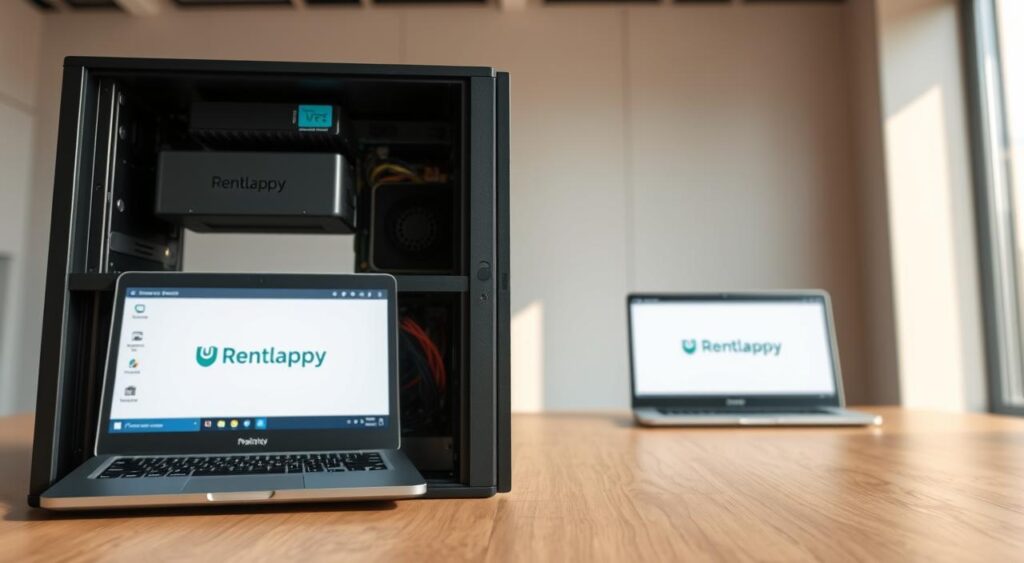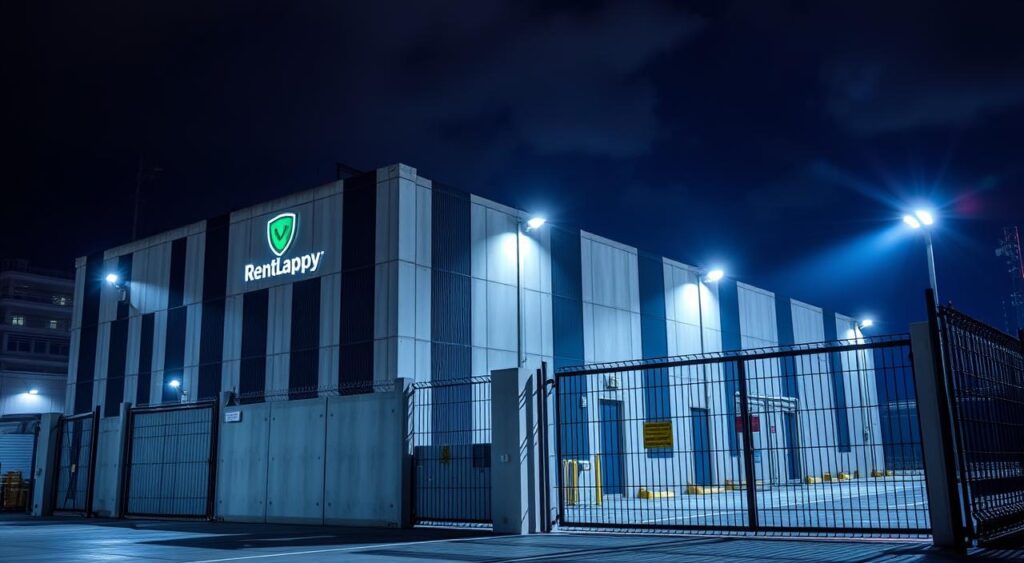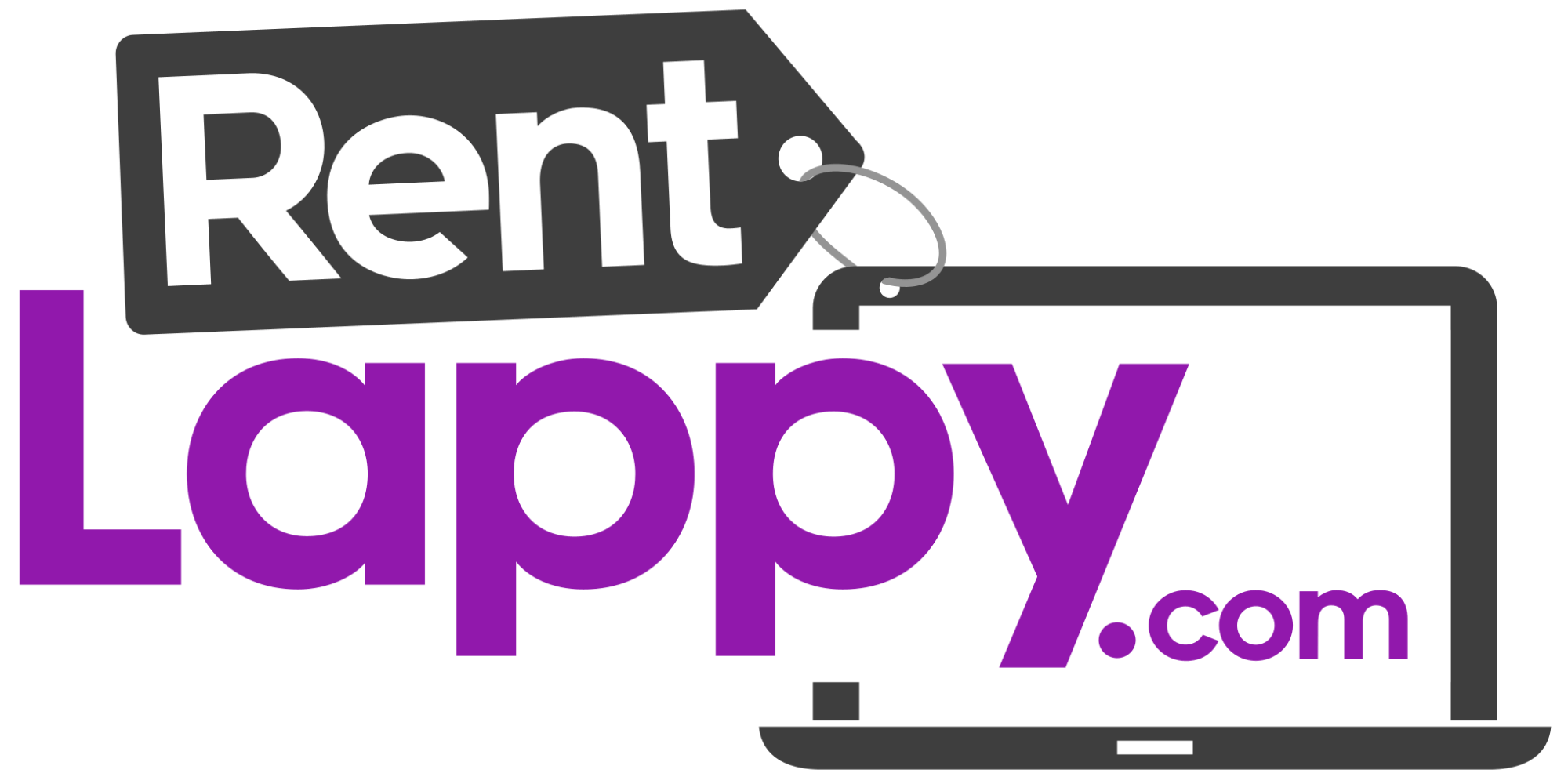Surprising fact: over 60% of Indian businesses report wasted spend because they picked the wrong infrastructure for their apps.
You need a clear outcome before you pick hardware or hosting. Start by naming the workloads you run, their peak loads, and the uptime you need.
This short piece helps you map those outcomes to VPS, a dedicated server, or cloud options in plain language. You’ll see how CPU, RAM, storage type (HDD, SSD, NVMe), and bandwidth affect performance and cost.
Security and backups matter as much as speed. Learn which SLAs and protections to demand so your data stays safe and accessible.
Practical note: if you also need laptops, desktops, and networking gear across India, RentLappy offers Pan-India services with brands like Dell, HP, Lenovo, and Apple, fast replacements, and eco-friendly practices to reduce e-waste.
Key Takeaways
- Clarify outcomes first so you can choose right and avoid excess cost.
- Compare VPS, dedicated server, and cloud by performance, flexibility, and price.
- Prioritize CPU, RAM, storage tier, and network throughput for real-world loads.
- Demand clear SLAs, encryption, and DDoS protection for strong security.
- Consider managed vs. unmanaged services based on your team’s skill and time.
- Use India-specific pricing and location to optimize latency and cost.
- For one-stop sourcing, RentLappy can bundle devices, hosting options, and support.
Start Here: Clarify Your Business Goals and Workloads
Map your workloads first so resources match real needs. List your core applications — websites, databases, ERP, analytics, LMS, or media streaming — and note whether each is compute-, memory-, storage-, or network-heavy.
Map applications to resources: compute, memory, storage, and network
Classify each app by what it stresses. Compute-heavy tasks need more cores and clock speed. Memory-bound apps require extra RAM to avoid swapping.
For storage-centric workloads, prefer SSD or NVMe and plan RAID and backup cadence. Define network expectations early: concurrent users, throughput, and acceptable latency affect hosting choice and cost.
Plan for growth: elasticity vs. predictable, steady demand
If demand spikes, cloud models give elastic scaling and pay-as-you-go billing. If load is steady and predictable, a fixed VPS or a dedicated server can be more cost-effective.
- Capture non-functional requirements like security, compliance, uptime targets, and RTOs.
- Estimate budget including OS licenses, managed services, DDoS protection, and backups.
- Consider data locality — hosting near Mumbai, Delhi-NCR, or Bengaluru lowers latency for Indian users.
If you want help sizing resources or to rent server bundles, RentLappy can review workloads and propose right-sized options with flexible terms. Reach out at +91-7827986686 or [email protected] for quick guidance.
Server Types Explained: Dedicated, VPS, and Cloud (and When to Use Each)
Picking the right hosting model shapes cost, control, and how your apps behave under load. Below is a simple comparison to help you decide for your business.

Dedicated deployment — full control and top performance
A dedicated server gives you an entire physical machine. You get full root-level control, predictable resources, and excellent performance.
This option suits database-heavy apps, high-traffic eCommerce websites, and workloads with strict compliance needs. You manage backups, patches, and security.
VPS — affordable isolation for SMEs and staging
VPS partitions hardware into virtual instances. Each instance gets dedicated slices of CPU and RAM at lower cost.
VPS is ideal for SMEs, test environments, and moderate-traffic production sites. It balances control and price while easing migration later.
Cloud — elastic scaling and pay-as-you-go flexibility
Cloud lets you scale up or down quickly and pay for what you use. This works well for spiky demand or seasonal launches.
Performance can vary due to shared infrastructure, so many teams use cloud alongside dedicated or vps footprints for hybrid resilience.
- When to pick dedicated: mission-critical loads, custom hardware, or strict isolation.
- When to pick vps: lower cost, faster setup, and predictable monthly pricing.
- When to pick cloud: elastic scaling, global reach, and rapid deployment.
RentLappy offers all three options through flexible rental plans, custom builds, and India-wide support to help you compare trade-offs in control, performance, and cost.
Key Specifications That Drive Performance and Cost
Good performance begins with the right mix of cores, memory, and storage speed for your workload. Below are the practical specs you must check so your applications meet SLAs without overspending.
CPU and cores
Match Intel Xeon or AMD EPYC families to your concurrency needs. Xeon and EPYC deliver strong multi-core throughput, while higher clock speeds help per-thread tasks like single-threaded APIs.
RAM sizing
Size RAM for your peak dataset and cache so you avoid swapping under heavy traffic. If a database grows, add memory before scaling CPU to reduce latency and improve overall performance.
Storage tiers and RAID
Choose HDD for bulk capacity, SSD for balanced IOPS, and NVMe for ultra-low latency. RAID 1/10 offers redundancy and speed, but always pair RAID with backups and recovery tests.
Network throughput and peering
Plan bandwidth for busiest windows and watch for data caps that affect media-heavy apps or frequent backups. Verify peering with Indian ISPs to reduce last-mile latency in Mumbai, Delhi-NCR, and Bengaluru.
- Document a baseline configuration: CPU, RAM, storage, NICs, RAID, and OS to simplify upgrades.
- Budget for OS licensing—Windows Server raises monthly cost; Linux often reduces licensing spend.
- Ask providers about NVMe availability, RAID controller models, and bandwidth SLAs to avoid surprises.
RentLappy supplies top brands (Dell, HP, Lenovo) with custom CPU, RAM, and storage configurations and flexible terms to align specs with your performance targets and predictable costs.
Security, Compliance, and Uptime: What You Should Demand
Your infrastructure choice must protect data and keep your apps online. Think of defenses and SLAs as part of the cost of doing business, not optional extras.

Security measures: firewalls, DDoS protection, encryption, access control
Require layered protection: network firewalls, DDoS scrubbing, and encryption in transit and at rest. These steps reduce risk to transactions and customer data.
Enforce strict access control with least privilege, MFA for administrators, and role-based permissions. Use SSH keys and regular patching to harden systems.
Monitoring and logging catch issues early. Combine vulnerability scans, endpoint protection, and periodic restore tests so recovery is predictable.
SLAs that matter: uptime targets, response times, remedies
Ask for 99.95%+ uptime, with clear response and resolution times and explicit credits if targets are missed. Confirm who handles incident escalation and maintenance so there are no gray areas.
“Design backups with the 3-2-1 rule—multiple copies, different media, one offsite—and test restores regularly.”
- Verify compliance and data residency for India-specific rules and audits.
- Consider dedicated IPs and segmentation to reduce noisy neighbors and boost reputation.
- Budget for add-ons—WAF, DDoS, and advanced backup—rather than buying them after an incident.
Practical help: a dedicated server gives full control over OS and settings, and RentLappy offers fast replacements and technical support to keep uptime high. Email [email protected] for advice on security add-ons and backup strategies that fit your hosting plan.
Managed vs. Unmanaged: Choose the Right Level of Control
Your team’s skillset should shape whether you take full control or hand day-to-day tasks to a provider. This choice affects cost, uptime, and how much operational work you keep in-house.
Unmanaged — full control, more responsibility
With an unmanaged option you get full control of the machine and the OS. The provider performs initial setup, but you handle patching, monitoring, and incident response.
Good when: you have in-house ops, want lower monthly cost, and need custom images for vps or dedicated server builds.
Managed — hands-off maintenance and expert support
A managed plan transfers maintenance to the provider. They handle updates, backups, monitoring, and basic security tasks to reduce your operational risk.
Good when: you prefer to free your team to focus on applications and product features.
- Weigh total cost: unmanaged lowers fees but moves labor to you; managed raises cost but shortens recovery time.
- Consider hybrid: use managed for production and unmanaged vps for dev/test agility.
- Ask providers for clear SLAs, escalation paths, and explicit backup/restore responsibilities.
“Request runbooks and dashboard access so you keep situational awareness even with managed support.”
If you want to offload daily tasks, ask RentLappy about setup assistance, monitoring, and backup options bundled with your rental; for in-house teams, RentLappy can deliver bare-metal or vps images ready for your standard build.
India Snapshot: Server Rental Pricing and Location Factors
Prices and proximity both shape how your infrastructure performs for end users across India.
Indicative ranges help you budget quickly. VPS plans typically start at around ₹500 and go up to ₹5,000 per month depending on vCPU, RAM, and SSD size.
Entry dedicated server builds begin near ₹8,000–₹12,000/month (Xeon E3, 16GB, 1TB HDD). High-end dedicated servers can range ₹25,000–₹50,000+ for dual Xeon and SSD arrays. GPU rigs start near ₹20,000/month and may exceed ₹1,00,000 for top cards.

Location and latency
Hosting in Delhi‑NCR, Mumbai, or Bengaluru usually lowers latency for major Indian user bases. Expect slightly higher pricing in Tier‑1 hubs, but better peering and faster response for customer-facing apps.
“Watch bandwidth bundles and data caps — they can change monthly cost quickly.”
| Option | Typical monthly range | When to pick | Notes |
|---|---|---|---|
| VPS | ₹500–₹5,000 | Small sites, dev/test | Cost‑efficient start, SSD tiers improve I/O |
| Dedicated | ₹8,000–₹50,000+ | Databases, high traffic | Predictable performance, custom storage |
| GPU / Cloud | ₹20,000–₹1,00,000+ | AI, ML, rendering | Monitor hourly cloud costs; plan caps |
Practical tip: factor OS licensing, backups, DDoS protection, and bandwidth into total cost. If you need quick delivery across cities, RentLappy offers Pan‑India pickup and flexible terms with bulk discounts. Call +91-7827986686 or email [email protected] for a quote.
server rental guide: A Step-by-Step Framework to Choose Right
Frame the problem: what must your platform deliver during peak traffic and when things fail?
Assess: workloads, growth, security, and compliance requirements
Catalog your applications, peak users, and recovery targets. Note compliance zones and where your users are located to set realistic latency and data residency needs.
Compare: dedicated vs. VPS vs. cloud for performance, flexibility, and cost
Weigh predictable performance (dedicated server), cost‑efficient isolation (vps), and elasticity (cloud). Consider how each model affects your TCO over 12–36 months.
Configure: CPU, RAM, storage, network, OS, and add-ons
Select CPU cores and clock for workloads, size RAM to peak datasets, and pick storage tiers (HDD/SSD/NVMe) with RAID. Add DDoS protection, backups, and the OS that fits your stack.
Validate: SLAs, support quality, and total cost of ownership
Confirm SLAs (aim for 99.95%+ uptime), response windows, and remedies. Ask for sample runbooks, monitoring access, and a clear support escalation path before you commit.
- Pilot a proof-of-concept to benchmark performance.
- Model TCO including rental, bandwidth, OS licenses, and support add-ons.
- Document the accepted configuration so you can scale with confidence.
| Step | Key checks | Why it matters | Action |
|---|---|---|---|
| Assess | Workloads, growth, security | Anchors requirements and resources | Run discovery call; list peak metrics |
| Compare & Configure | Dedicated/vps/cloud, CPU, RAM, storage | Balances performance, flexibility, and cost | Prepare side‑by‑side configs and benchmarks |
| Validate | SLAs, support, TCO | Reduces risk at scale | Request SLAs, runbook, and pilot |
“Plan 30–40% headroom to absorb bursts without urgent reconfiguration.”
Partner with RentLappy for discovery calls, tailored configurations with Dell/HP/Lenovo, and SLA validation. Email [email protected] or call +91-7827986686 to get a side‑by‑side comparison and a fast pilot.
Provider Checklist: What to Evaluate Before You Rent
Start by demanding evidence: SLA reports, certifications, and support runbooks to verify claims.
Reputation and standards matter. Check certifications and data center traits (look for Tier-III characteristics). These show resilient power, cooling, and network design.
Reputation, certifications, and data center standards
Ask for references from similar businesses and sample SLA reports. Request details about physical security, redundancy, and compliance.
Confirm the provider can meet your configuration needs—CPU models, RAM density, SSD/NVMe, RAID, and OS choices—so your infrastructure matches the blueprint.
Support depth: 24/7 access, escalation paths, and expertise
Probe support options. You want 24/7 access with L1–L3 expertise and documented escalation paths to reduce downtime during critical incidents.
Clarify maintenance windows, response and resolution times, and remedies for missed targets. These impact how you handle releases and urgent issues.
“Request sample SLA reports and runbooks to see how the team reacts under pressure.”
- Verify network quality: bandwidth tiers, peering with Indian ISPs, DDoS options, and dedicated IPs.
- Check backup choices, retention, offsite copies, and restore assistance.
- Ensure transparent pricing—no hidden fees for bandwidth, IPs, or urgent replacements.
| Check | Why it matters | What to request |
|---|---|---|
| Certifications & DC tier | Shows resilience and compliance | Audit reports, Tier-III indicators |
| SLA & uptime | Defines promised availability | Sample SLA reports, credits, uptime targets |
| Support & escalation | Reduces incident impact | Contact matrix, runbooks, 24/7 access |
| Network & backups | Keeps apps reachable and recoverable | Peering map, DDoS options, backup retention |
| Pricing & logistics | Controls TCO and delivery speed | Transparent quotes, replacement SLAs, Pan‑India service |
Practical note: RentLappy brings a proven track record with corporates, startups, institutions, and event organizers. You get Pan‑India coverage, bulk discounts, and quick replacements to simplify operations for distributed teams.
Why RentLappy for Servers in India
When timelines matter, logistics and local reach shape your deployment success. RentLappy combines India-wide delivery with flexible terms so you can pilot, run events, or host long projects without being locked into long contracts.
Pan-India delivery and flexible terms
Daily, weekly, and monthly options let you match billing to project needs. You get delivery and pickup across major cities, which keeps installs on schedule and reduces downtime when plans shift.
Top brands, custom builds, and fast replacements
Choose Dell, HP, Lenovo, or Apple and tailor CPU, RAM, storage, and network to your application blueprint. Bulk discounts and quick replacements protect timelines and make scaling predictable.
One partner for endpoints and infrastructure
RentLappy bundles servers, desktops, laptops, routers, switches, and firewalls under one SLA. That simplifies procurement and lets your team focus on features, not logistics.
Eco-friendly, trusted by organisations
Reduce e-waste by extending device life with rental and refurbished sales options. Corporates, startups, institutions, and event teams rely on RentLappy for consistent nationwide deployments.
- Pan‑India pickup and delivery for pilots, training, and events
- Custom configurations for vps, dedicated server needs, and hosting stacks
- Responsive technical support and quick hardware swaps
To discuss configurations, timelines, or a bundled solution, call +91-7827986686 or email [email protected].
Conclusion
Make your final decision by testing a pilot and confirming SLAs, security, and budget fit.
You’ve learned how to map applications and peak patterns to CPU, RAM, storage, and network so resources match needs today and scale tomorrow.
Dedicated server, vps, and cloud each have clear benefits: top performance, cost‑efficient isolation, and elastic scaling respectively. Aim for 99.95%+ uptime and baseline protections—firewalls, DDoS, encryption, access control, and backups—to keep your data and websites safe.
Use India pricing bands as a budgeting compass and host near users in Delhi‑NCR, Mumbai, or Bengaluru to cut latency and cost. When you’re ready to rent server infrastructure with confidence, RentLappy’s Pan‑India delivery and custom offers simplify execution.
Next step: call +91-7827986686 or email [email protected] for a no‑obligation consult and custom quote tailored to your workloads, rollout plan, and budget.
FAQ
How do I choose the right server for my business needs?
Start by mapping your applications to required compute, memory, storage, and network resources. Decide whether you need predictable capacity or elasticity for spikes. Compare dedicated, VPS, and cloud options against performance, control, and cost, then pick a configuration that meets current load and planned growth.
When should I pick a dedicated machine versus a VPS or cloud instance?
Choose dedicated when you need full control, maximum performance, and strict isolation for heavy databases, gaming, or high-traffic sites. Use a VPS for cost-effective isolation and predictable workloads for small and medium teams. Opt for cloud when demand fluctuates and you want rapid scaling and pay-as-you-go pricing.
What CPU, RAM, and storage specs matter most for performance?
Focus on CPU architecture (Intel Xeon or AMD EPYC), core count, and clock speed for compute-heavy apps. Size RAM to avoid memory bottlenecks during peak use. Prefer NVMe SSDs for low latency and high I/O; choose RAID for redundancy. Match network throughput and latency requirements to your traffic patterns.
What security and compliance features should I demand from a provider?
Look for firewalls, DDoS protection, encryption in transit and at rest, strict access controls, and logging. Verify compliance certifications relevant to you (for example ISO 27001 or SOC 2) and ask about physical data center security and regular audits.
How important are SLAs and what uptime should I expect?
SLAs define availability guarantees and remedies. Aim for providers offering 99.95%+ uptime for mission-critical services. Also review response times for incidents, maintenance windows, and compensation terms if SLAs aren’t met.
Should I choose managed or unmanaged services?
Pick unmanaged if you have the in-house skills to handle OS management, patches, monitoring, and incident response—this lowers costs and gives full control. Choose managed if you want the provider to handle setup, updates, backups, and proactive monitoring so your team focuses on applications.
What are typical price ranges in India for different options?
Indicative monthly ranges are: basic VPS from about ₹500, dedicated from roughly ₹8,000, and GPU-enabled machines starting near ₹20,000. Prices vary by config, support level, and data center location.
How does data center location in India affect my choice?
Pick a data center near your users—Delhi-NCR, Mumbai, and Bengaluru are major hubs—to reduce latency. Location also affects compliance, local support availability, and sometimes pricing.
What checklist should I use when evaluating providers?
Evaluate reputation, certifications, and data center standards. Confirm support depth (24/7 access, escalation paths), available SLAs, hardware brands, upgrade paths, and total cost of ownership including bandwidth and add-ons.
What configuration questions should I ask before ordering?
Ask about exact CPU model, core/thread count, RAM type and expandability, storage type (HDD/SSD/NVMe) and RAID options, network bandwidth and burst policies, OS choices, backup plans, and available managed services.
How do I plan for future growth without overspending now?
Design for modular scaling: choose a baseline that covers current needs and ensure the provider supports easy vertical or horizontal scaling. Use cloud instances for burstable demand, or reserve dedicated capacity with upgrade paths for steady growth.
What support and maintenance response times should I expect?
For critical systems, expect 24/7 support with rapid incident escalation and targeted response SLAs (for example under one hour for critical incidents). Confirm who handles hardware replacements, OS patching, and backups under your plan.
How can I optimize cost while preserving performance and security?
Right-size resources to actual usage, leverage reserved or committed plans for steady workloads, use SSD tiers only where needed, and combine managed services to reduce in-house overhead. Always include security and backup costs in TCO calculations.
What additional services can providers offer to simplify deployment?
Look for OS and control panel options, automated backups, monitoring and alerting, managed databases, load balancing, DDoS mitigation, and professional services for migration and architecture reviews.
Why might I choose a provider that offers equipment delivery and on-site options?
If you need short-term capacity for events, testing, or regional projects, providers offering pan-India delivery, pickup, and quick replacements reduce logistics friction and speed time to operation.

